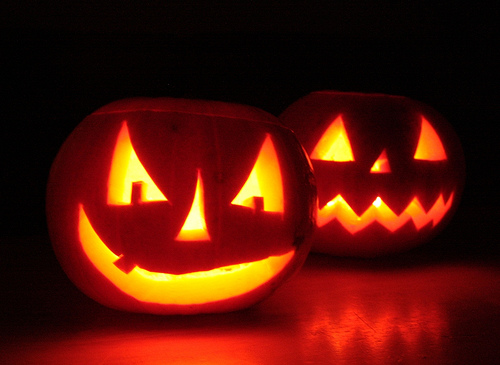A combination harvest festival/ghost party
Every year Halloween is celebrated in countries around the world. This near-global holiday happens to coincide nicely with the harvest festivals which have been celebrated at the end of autumn by cultures throughout history. The contemporary Western celebration of Halloween owes much of its roots to the Celtic harvest festival of Samhain, although it also has ties to ancient Roman celebrations, and the harvest festivals of medieval Europe.
Samhain (pronounced "sah-win") is the Old Gaelic word for "the end of summer." There were four quarter dates in the medieval Gaelic calendar, corresponding to the turning of the four seasons. Of these dates, Samhain was the first and most important. It marked an important date for people who raised livestock, as flocks were brought in from their summer pasture, and animals were slaughtered in preparation for winter.
The night of Samhain marked the boundary between fall and winter. Like many boundary periods, it was a time when magical creatures and the souls of the dead had an easier time visiting our own plane of existence. Thus it became a default celebration of the dead, a practice which can still be seen today in the Mexican celebration of the Day of the Dead on November 1st.
Ghosts were often thought to visit their old homes, and the living residents would hold feasts to welcome them, complete with an empty chair at the table where the ghosts were invited to sit. Samhain was also a night to practice divination, which was thought to be more successful on that night than any other.
On a more sinister note, harmful spirits were also thought to be more active on Samhain night. Superstitious households would often take measures to counteract their malicious mischief, including practices which may have led to many of today's Halloween celebrations.
One such custom was the practice of dressing up in a costume and going door-to-door asking for treats. By disguising yourself, you were hiding yourself from the evil fairies and goblins who were also about. The hobby horse, a horse's skull attached to a long pole used as a puppet, was an important part of many of these celebrations.
The Jack 'o lantern also came from this practice. When traipsing about the dark countryside in costume, Samhain celebrants lit their way with small lanterns carved out of turnips and beets. These were meant to represent the will 'o the wisp, the eerie spirit light which could be seen over marshes at night, and which was closely associated with evil spirits.
